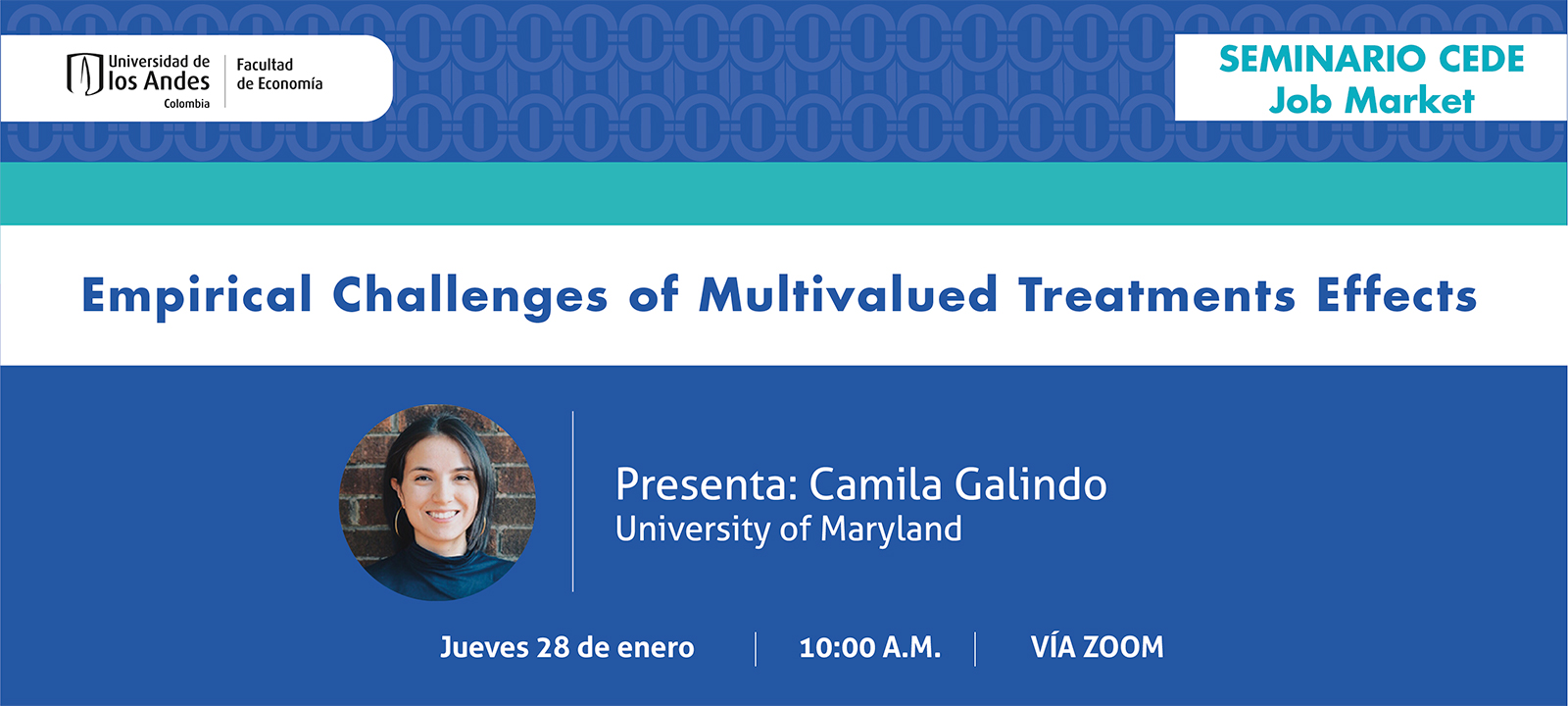Seminario CEDE - Camila Galindo

I study treatment effects under multiple options that lack a clear ranking. When the identifying variation stems from multiple instruments, agents can switch into different options and from many initial states. I discuss how to use conditional choice rules to estimate the shares of agents switching at well-defined margins of choice and their treatment effects. I develop an empirical strategy consistent with this framework and apply it to assess the impact of childcare choice in Colombia on children’s development. Parents can choose between home care and public care at small or large centers. I exploit two sources of exogenous variation: an experiment that provides information and encourages parents to switch to large centers, jointly with the geographical distance between the child’s home to the nearest center. Parental responses to the experimental variation can differ depending on the distance to the center. This feature uncovers heterogeneous responses along two margins of choice: small versus large centers, and small centers versus home care. Previous methods would attribute all the experimental variation to the small versus large centers margin. I find that, on average, 15-18% of parents are induced to switch from small towards large centers as the lottery outcome and proximity vary. My results suggest that, on average, switching towards large centers might benefit some children who live far from large centers but have more educated mothers.

